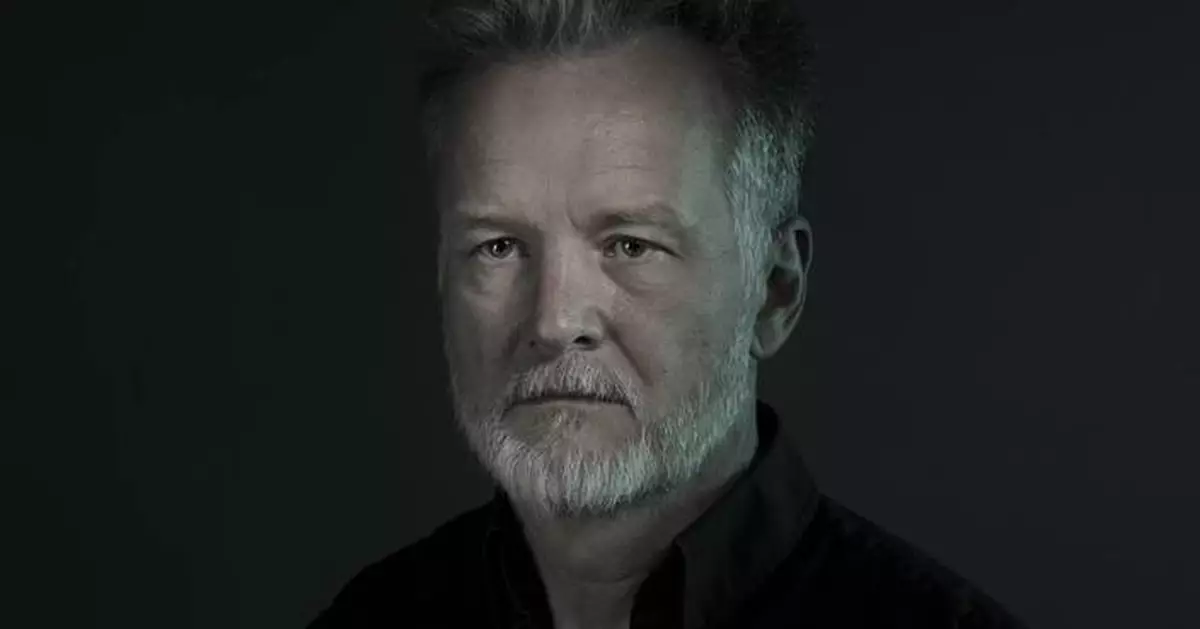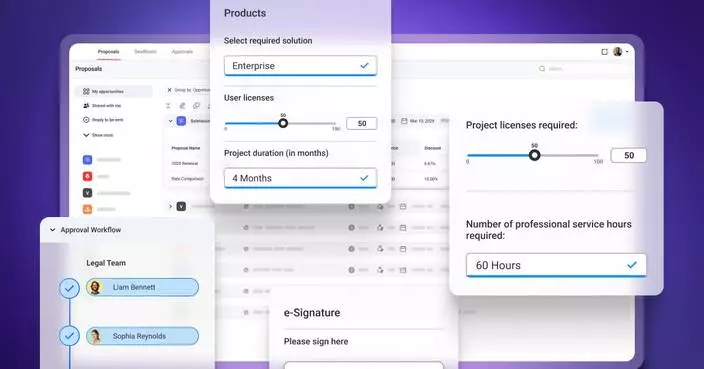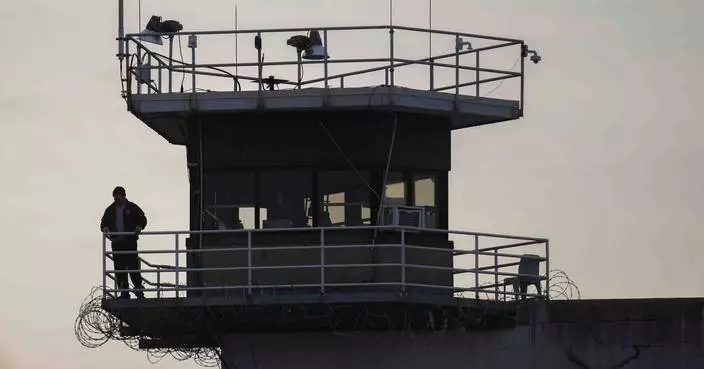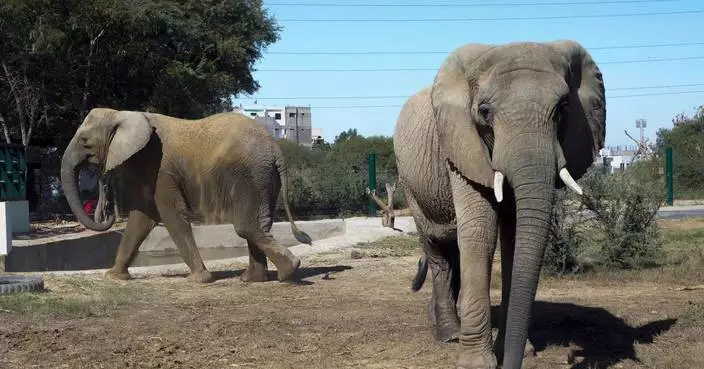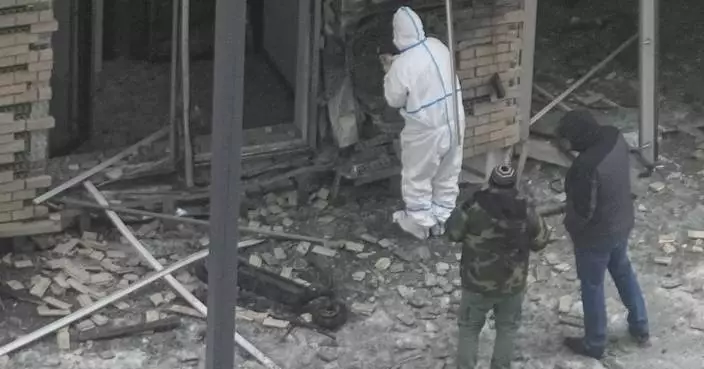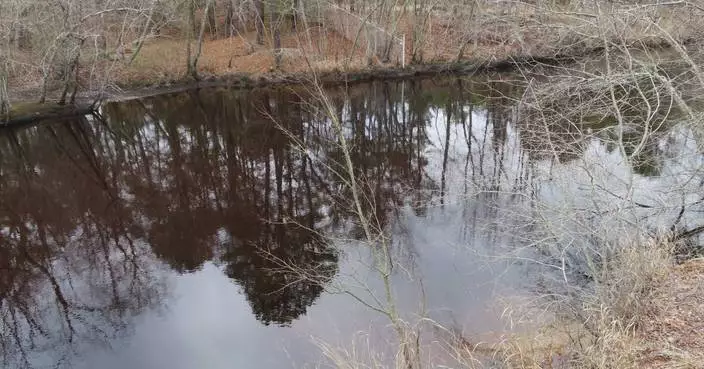LOS ANGELES (AP) — A photojournalist who covered world events such as the conflict in the former Yugoslavia, the fall of the Berlin Wall and Nelson Mandela's release from prison was fatally stabbed during a weekend hike in the San Gabriel Mountains and his 19-year-old son has been charged in the killing.
Paul Lowe, 60, a British photographer, war journalist and professor at the University of the Arts London, suffered “trauma to his upper torso” and was pronounced dead Saturday on a road near Stoddard Canyon Falls, the Los Angeles County Sheriff's office said in a news release.
The county medical examiner's office said Lowe died from a stab wound to the neck.
A man later identified as Lowe's son was seen driving away and was involved in a solo vehicle crash a few miles away. Based on evidence at the scene, coupled with statements made by the son and witnesses, he was arrested, the sheriff's office said.
The Los Angeles County District Attorney's Office, which filed one count of murder against the son, Emir Abadzic Lowe, said first responders were called to the scene by a passerby. It said the son was scheduled to be arraigned Wednesday. The office did not say whether he had a lawyer.
Paul Lowe was a professor of conflict, peace and the image at the University of the Arts' London College of Communication, according to its website. The university said has been “a deeply valued colleague” for more than two decades.
“Paul’s work across his career made a ground-breaking impact in the representation of war and conflict and latterly in the complex cultural negotiations involved in peace and reconciliation work,” the university said in a statement. “Paul leaves an incredible legacy as an award-winning photographer, author, critic and, not least, as a truly compassionate educator.”
His book, “Bosnians” documented 10 years of war and the post-war situation in Bosnia. It was published in 2005. More recent books include “Photography Masterclass”, “Understanding Photojournalism," ’Reporting the Siege of Sarajevo” and “Photography, Bearing Witness and the Yugoslav Wars, 1988-2021," according to the website.
In an interview with The Guardian, Lowe said he focused on casualties and hospital patients during the early days of the siege of Sarajevo. He eventually became preoccupied with what happens to people when “reduced to the medieval conditions caused by a siege.”
“People would risk their lives for a little pleasure,” he said. “And it could be very hard on kids, who obviously didn’t want to be stuck indoors. During quieter periods, they were able to go outside more — I took a picture of children swimming in the river during a ceasefire. But the river, like so much of the city, was clearly visible to Serbian snipers. One winter, I attended an awful scene: a group of five or six children had been killed by a shell while sledging in front of their house.”
He discussed a photo he took of a child on a street with a ball. “It’s such an ordinary thing for a kid to do, but it’s happening against the backdrop of the tank trap, a hint of the ever-present danger,” he said.
Many people paid tribute to Lowe.
“Paul was a very talented, courageous and committed photojournalist who repeatedly put himself in harm’s way to show the world the reality of war zones and humanitarian crises around the world,” said Santiago Lyon, a former vice president and director of photography at The Associated Press who worked with Lowe during the siege of Sarajevo in the early 1990s. "He then became an accomplished and well respected educator dedicated to preparing future generations of photojournalists. His untimely death has profoundly affected the photojournalism community and we are in shock.”
Lowe taught at an academy through The VII Foundation, which trains and equips journalists from communities underrepresented in the media.
“Paul was a courageous and beloved comrade, and a deeply devoted father and husband. The loss is shocking and overwhelming, and our hearts go out to his wife and family,” the foundation posted in a statement online.
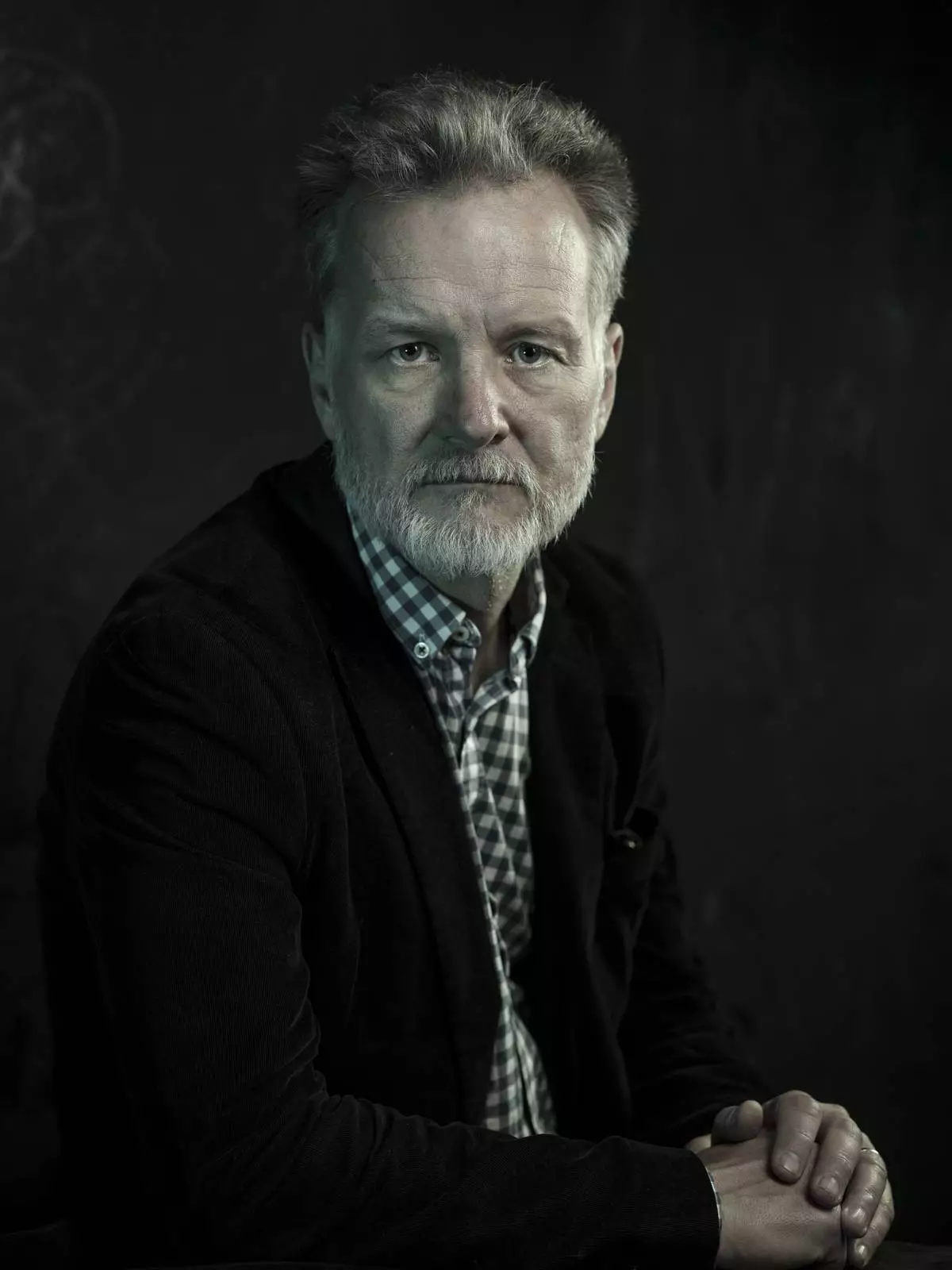
This photograph, provided by the VII Foundation, shows Paul Lowe posing for a portrait in Sarajevo, Bosnia-Herzegovina, May 7, 2019. (Justin McKie/VII Foundation via AP)
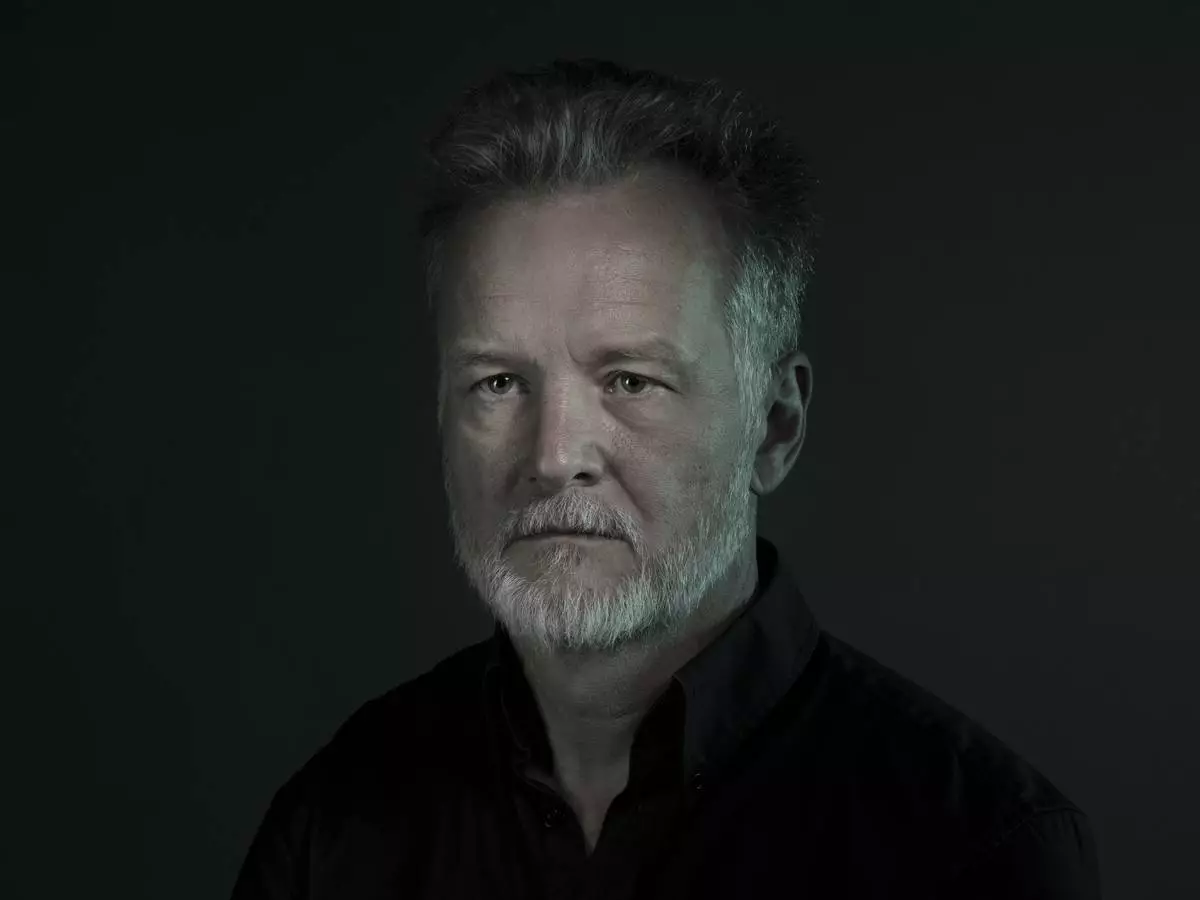
This photograph, provided by the VII Foundation, shows Paul Lowe posing for a portrait in Sarajevo, Bosnia-Herzegovina, May 7, 2019. (Justin McKie/VII Foundation via AP)
From public hangings in the town square to lethal injections witnessed by journalists, executions historically have mostly been carried out with at least some public scrutiny. Indiana was expected to again diverge from that tradition Wednesday, until state prison officials granted Joseph Corcoran 's request to include a reporter among those witnessing his early-morning execution.
The state had said no independent witnesses would be present due to Indiana laws shielding information about the death penalty. But the editor of the Indiana Capital Chronicle posted on X after the early Wednesday execution that Corcoran put one of the outlet’s reporters on his own list of permitted witnesses and she was allowed to observe.
Prior to the change, some First Amendment advocates and death penalty experts call Indiana's lack of transparency during the gravest of government punishments alarming.
Media witnesses play a crucial role in executions by providing the public with independent, firsthand and factual accounts, said Robin Maher, executive director of the Death Penalty Information Center (DPIC).
“Media ensures government accountability and transparency in an otherwise closed and secretive process,” Maher said. “The decision to exclude media witnesses raises troubling questions about whether state officials lack the confidence or the ability to conduct the execution without botching it.”
The Associated Press aims to cover every U.S. execution because the public has a right to know about all stages of the criminal justice process — including when things do not go according to the government's plans. Witnesses from the AP and other news organizations have been able to tell the public when executions went awry, including in Idaho, Alabama, Arizona, Oklahoma and Ohio.
Formal descriptions of lethal injections by prison officials are sometimes sanitized compared with the detailed accounts offered by journalists. Federal executioners who put 13 inmates to death by lethal injection during the last months of the Trump administration likened the process to falling asleep, while reports by the AP and other outlets described how the condemned persons' stomachs shuddered as the pentobarbital took effect.
In response to a previous AP request for comment on the state’s barring of independent witnesses, Indiana Department of Correction spokesperson Brandi Pahl cited state law explicitly outlining who can be at an execution. Media witnesses are not listed.
The Indiana Department of Correction announced Corcoran's death in a brief written statement that included little information except that the “execution process” started shortly after midnight and that Corcoran was pronounced dead at 12:44 a.m.
Corcoran attorney Larry Komp said afterward that he, the Indiana Capital Chronicle reporter and two family members were Corcoran's witnesses. The Capital Chronicle reported that the witnesses had limited visibility of the chamber for about six minutes, during which time Corcoran first appeared awake with his eyes blinking, then after a brief movement of his left hand a few minutes later, he did not move again. The prison warden closed the blinds to the witness room about four minutes before the time the state said Corcoran was pronounced dead, the outlet reported.
The earliest death penalty laws were recorded 3,800 years ago in the Code of King Hammaurabi of Babylon, according to the Death Penalty Information Center. Over the next 1,800 years, death sentences were often carried out by public crucifixion, drowning, beating, burning or impalement. By the 10th century, public hangings were the norm in parts of Europe.
The United States carried out executions in public settings until 1834, when Pennsylvania became the first state to move them into correctional facilities, according to DPIC.
Today the vast majority of the 27 states with capital punishment and the federal government recognize the need for public oversight via media witnesses.
Indiana and Wyoming are the only states that prohibit them, according to the DPIC. Wyoming has executed one person in the last half-century, killing Mark Hopkinson by lethal injection in 1992.
The only U.S. Supreme Court ruling on the subject was in 1890, when it upheld a total ban on media access to executions in a case out of Minnesota.
Despite the ban, in 1906 a reporter sneaked into a Minnesota jail to witness the hanging of William Williams. The execution was botched: The rope was too long, and Williams hit the floor after dropping through the gallows of the trap door. Jail deputies had to hoist him up again by the rope, holding him for 14 minutes until he strangled to death.
Minnesota abolished the death penalty five years later.
Another Supreme Court ruling in 1980 found that the First Amendment guaranteed the public — and the media — the right to attend murder trials: “People in an open society do not demand infallibility from their institutions, but it is difficult for them to accept what they are prohibited from observing,” the court wrote.
In the years since, lower federal courts have frequently extended the right to attend criminal trials to other proceedings, including executions.
“To determine whether lethal injection executions are fairly and humanely administered, or whether they ever can be, citizens must have reliable information about the ‘initial procedures’ which are invasive, possibly painful and may give rise to serious complications. This information is best gathered first-hand or from the media, which serves as the public’s surrogate,” a 9th U.S. Circuit Court of Appeals panel wrote in 2002.
Still, public access to U.S. executions is eroding, according to research from the DPIC. At least 16 states have passed death penalty secrecy laws since 2010, the group says, many of them focused on keeping details obscured about where lethal injection drugs are obtained.
Pressure from news organizations has sometimes prompted prison officials to change policies. That was the case in 2017, when the Arkansas Department of Correction announced that media witnesses would not be allowed pencils or paper to take notes; that was changed after outlets reported on the ban.
In Idaho, the AP, East Idaho News and The Idaho Statesman are suing for access to a part of the execution facility that is currently hidden from view. The news organizations want to be able to watch as lethal injection drugs are administered into IV lines.
Idaho prison officials have not yet officially responded to the lawsuit but maintain that the state has one of the most transparent execution processes in the nation.
Ahead of Corcoran's scheduled execution, the heads of the Hoosier State Press Association, Indiana Broadcasters Association, Freedom of the Press Foundation and Indiana Chapter of the Society of Professional Journalists sent a letter to Gov. Eric Holcomb calling secrecy a “miscarriage of justice.”
“The decision to carry out an execution is the gravest single act a state can partake in, and such an act warrants an impartial witness who bears the burden of reporting the process to the people of Indiana,” the organizations said.
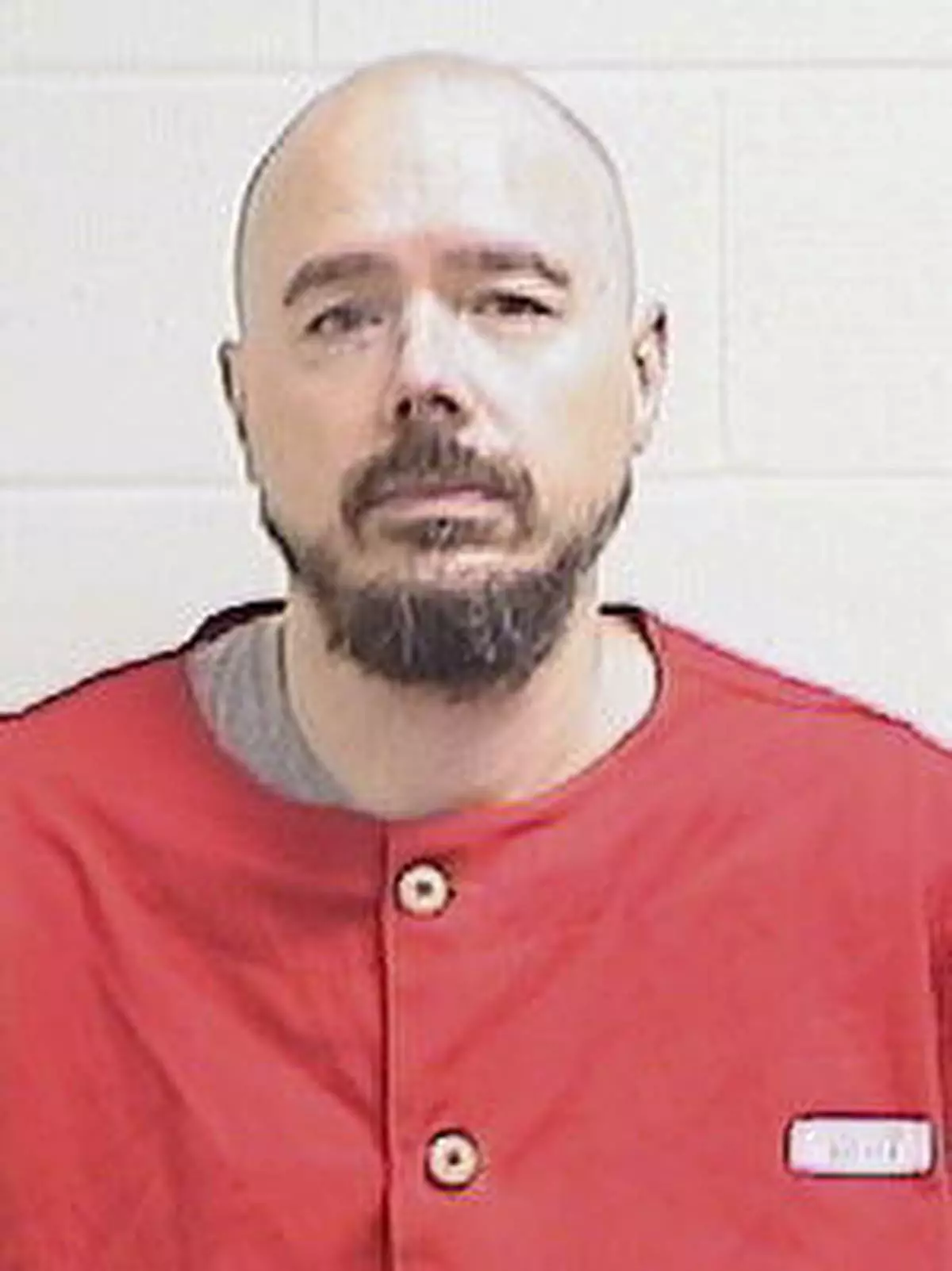
This undated photo provided by the Indiana Department of Corrections, shows Joseph Corcoran, who is scheduled to be executed before sunrise on Dec. 18, 2024. (Indiana Department of Corrections via AP)
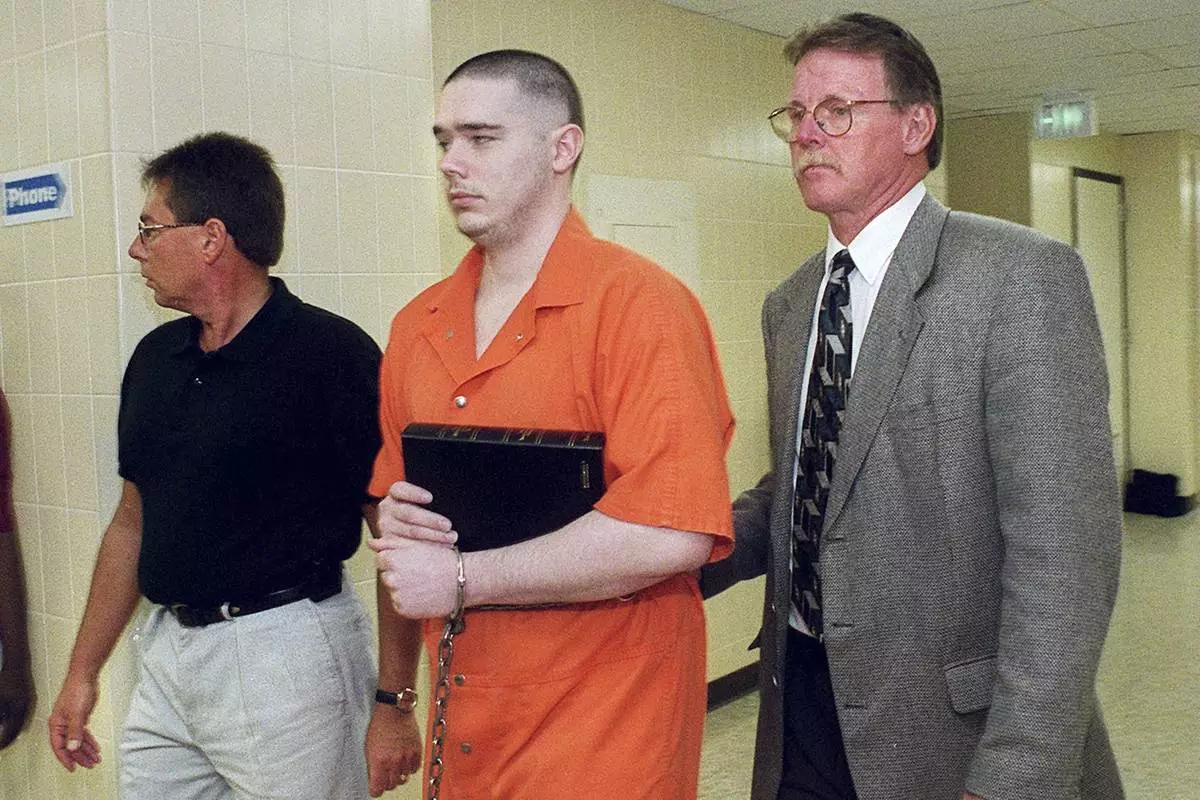
Joseph Corcoran is led to the City-County Lockup on Aug. 26, 1999, in Fort Wayne, Ind., after being sentenced to death in the slayings of four people in July 1997. (Matt Sullivan/The Journal-Gazette via AP)
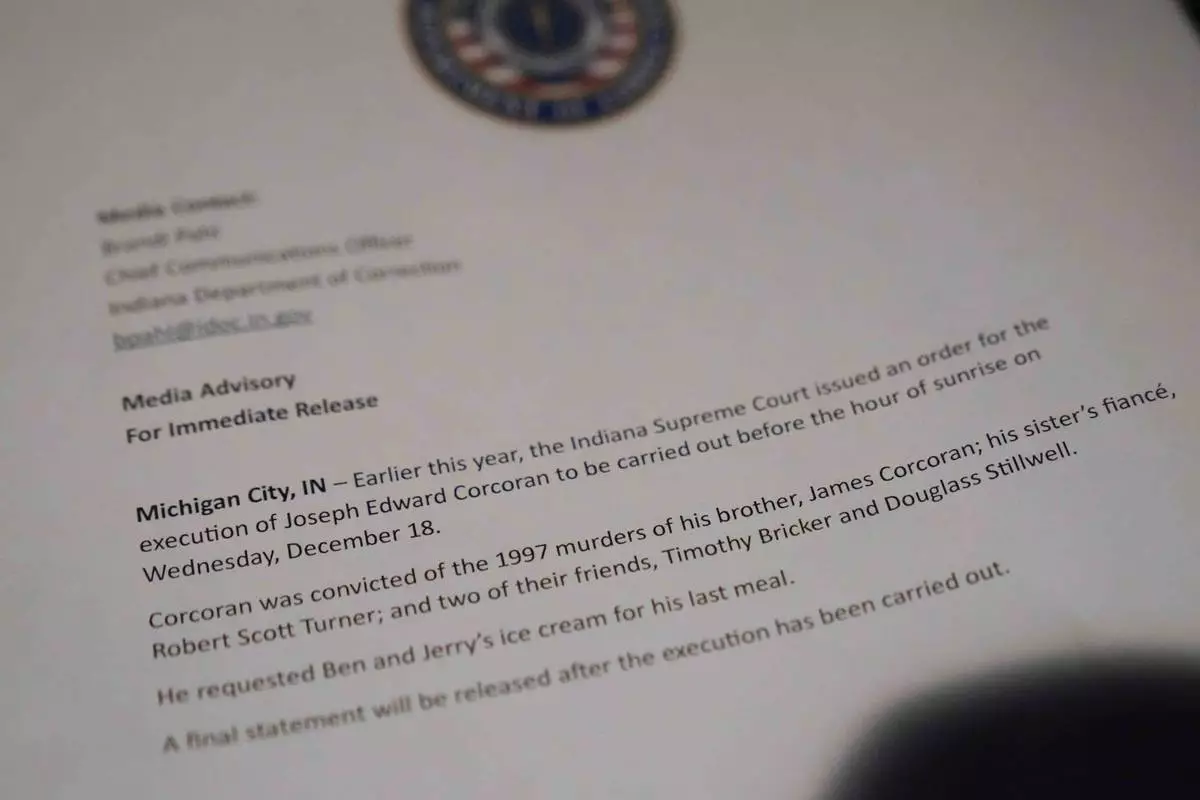
Officials deliver a paper statement outside of Indiana State Prison where, barring last-minute court action or intervention by Gov. Eric Holcomb, Joseph Corcoran, 49, convicted in the 1997 killings of his brother and three other people, is scheduled to be put to death by lethal injection before sunrise Tuesday, Dec. 17, 2024, in Michigan City, Ind. (AP Photo/Erin Hooley)
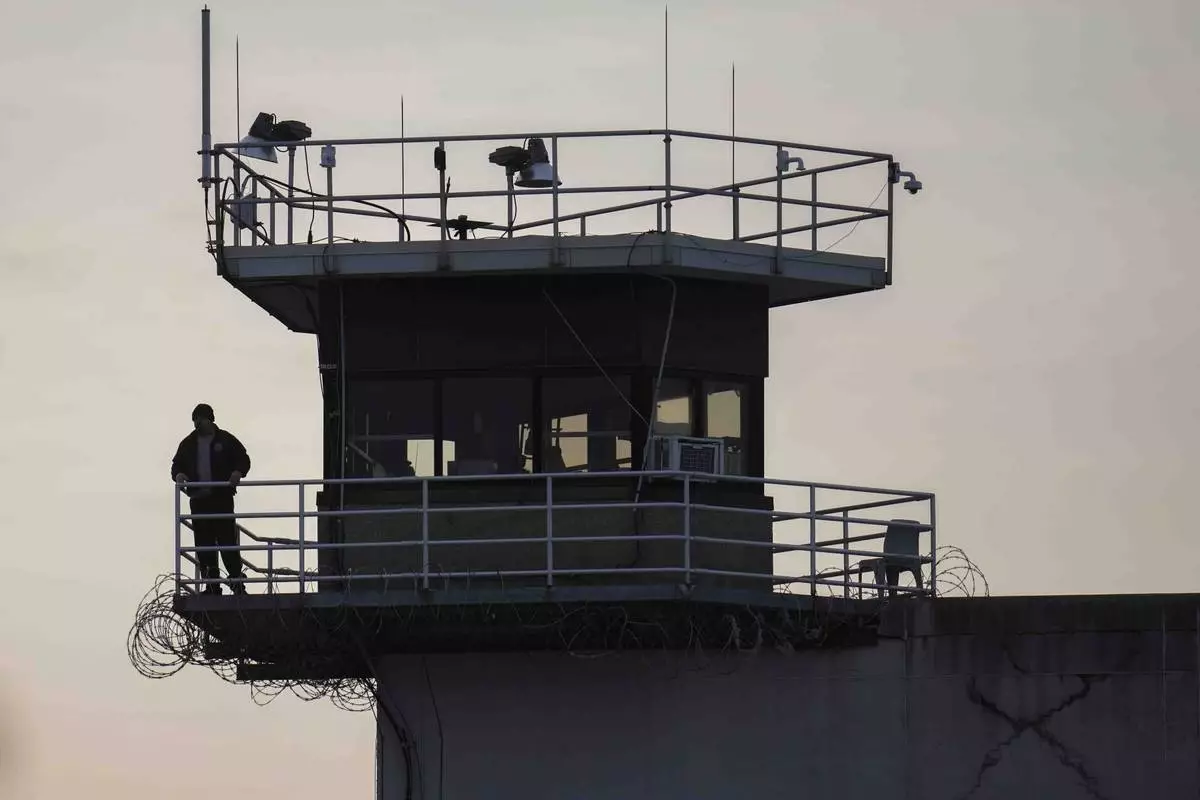
A guard stands in a tower at Indiana State Prison where, barring last-minute court action or intervention by Gov. Eric Holcomb, Joseph Corcoran, 49, convicted in the 1997 killings of his brother and three other people, is scheduled to be put to death by lethal injection before sunrise Tuesday, Dec. 17, 2024, in Michigan City, Ind. (AP Photo/Erin Hooley)
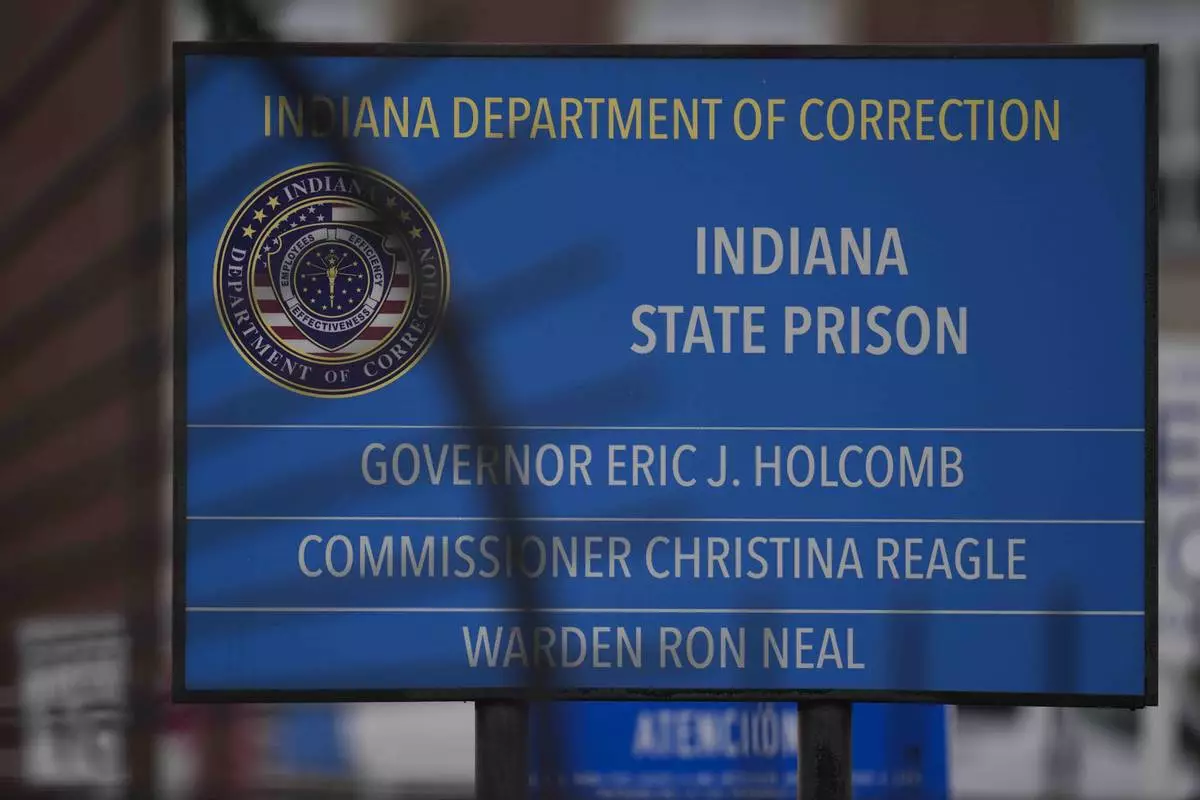
A sign is posted outside of Indiana State Prison where, barring last-minute court action or intervention by Gov. Eric Holcomb, Joseph Corcoran, 49, convicted in the 1997 killings of his brother and three other people, is scheduled to be put to death by lethal injection before sunrise Tuesday, Dec. 17, 2024, in Michigan City, Ind. (AP Photo/Erin Hooley)
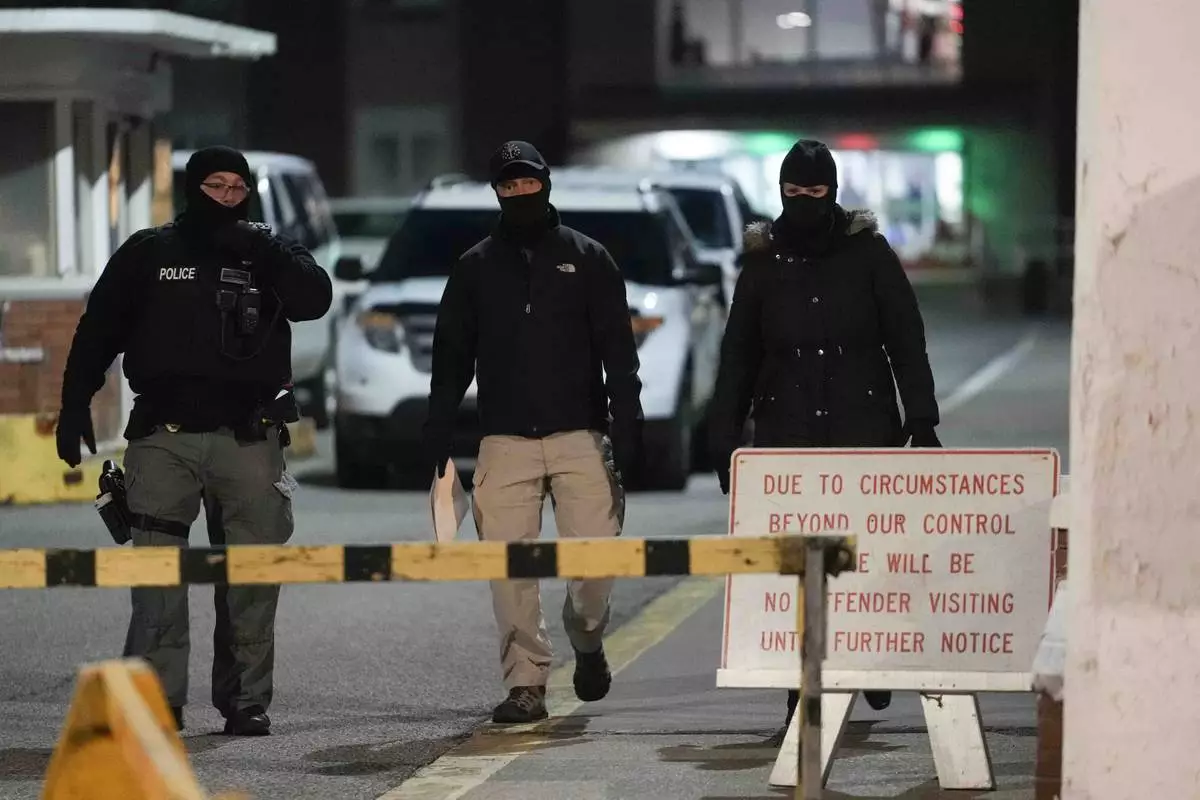
Officials deliver a paper statement outside of Indiana State Prison where, barring last-minute court action or intervention by Gov. Eric Holcomb, Joseph Corcoran, 49, convicted in the 1997 killings of his brother and three other people, is scheduled to be put to death by lethal injection before sunrise Tuesday, Dec. 17, 2024, in Michigan City, Ind. (AP Photo/Erin Hooley)
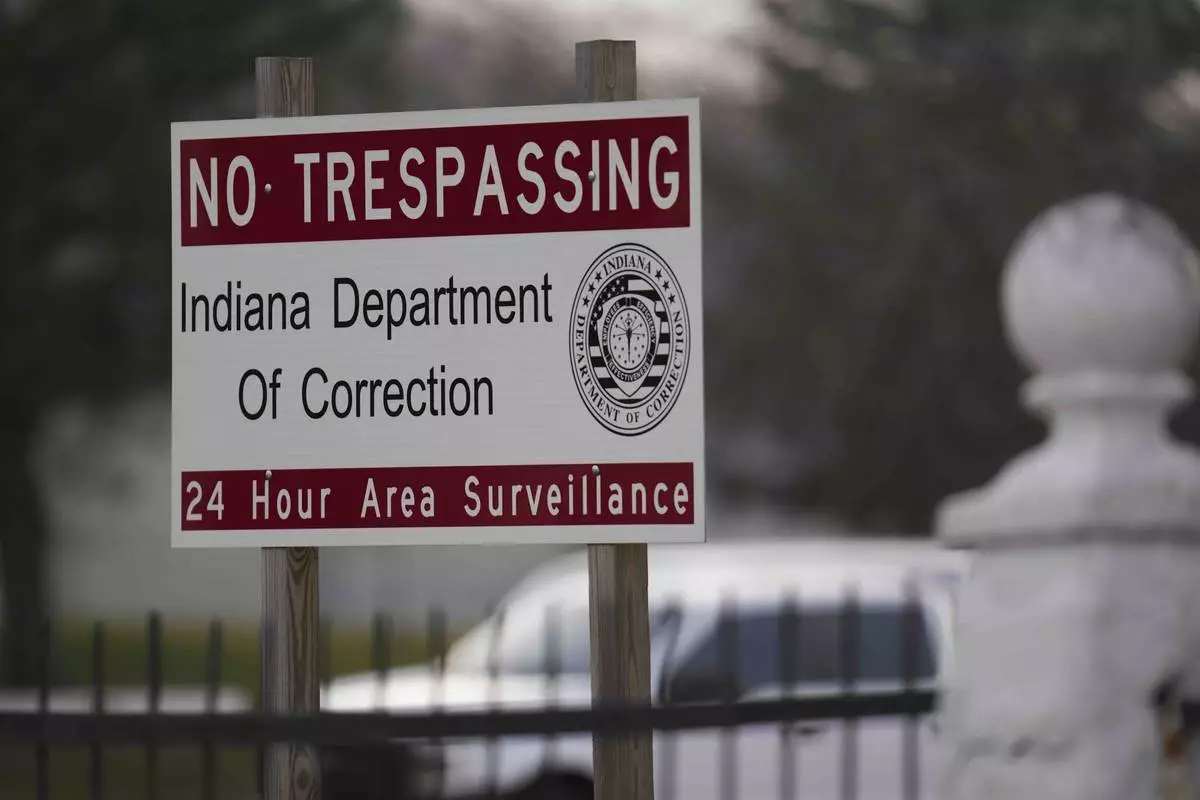
A sign is posted outside of Indiana State Prison where, barring last-minute court action or intervention by Gov. Eric Holcomb, Joseph Corcoran, 49, convicted in the 1997 killings of his brother and three other people, is scheduled to be put to death by lethal injection before sunrise Tuesday, Dec. 17, 2024, in Michigan City, Ind. (AP Photo/Erin Hooley)




